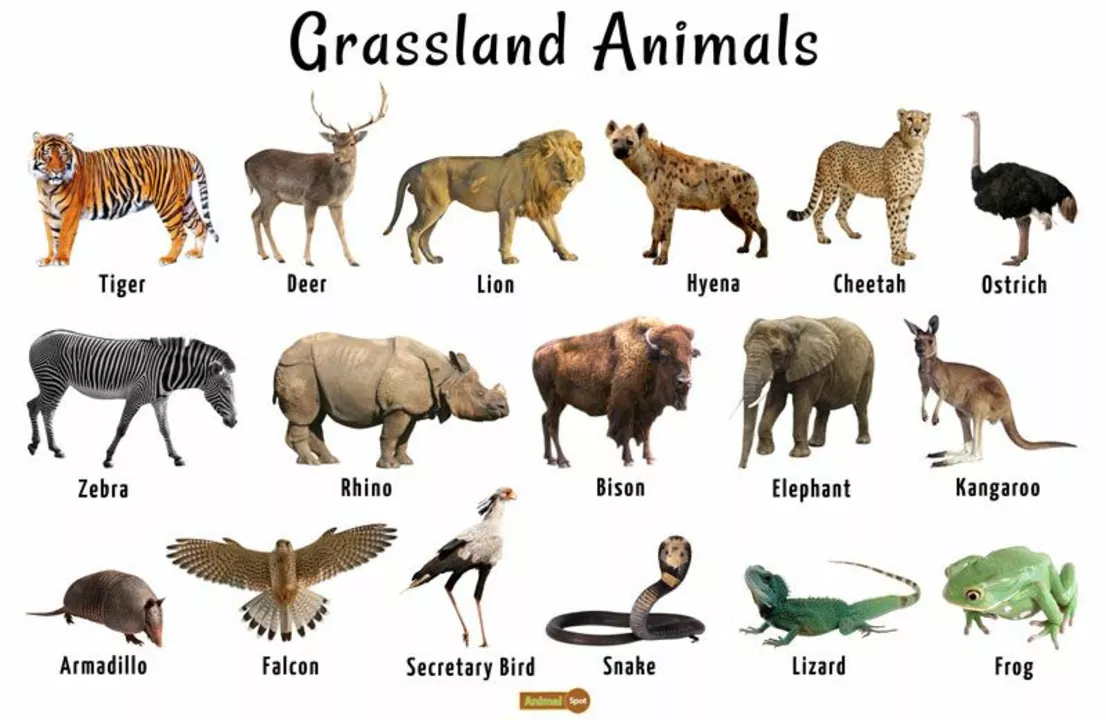Animals with Dual Identities: Meet the Creatures with More Than One Name
When it comes to the animal kingdom, there are many creatures that go by more than one name. In this article, we'll delve into the fascinating world of animals that are known by multiple monikers. Some of these names might surprise you, while others might be more familiar. So, let's get started on our journey to discover the animals with more than one name!
1. The Pronghorn: North America's Speedster
Meet the Pronghorn, the fastest land animal in North America, which is often called the "antelope" or "American antelope." The correct name for this unique ungulate is actually "pronghorn." They are not true antelopes, but they do share some similarities with their African counterparts. Pronghorns are known for their incredible speed and endurance, reaching speeds of up to 60 miles per hour. These agile animals are also found in parts of Mexico and Canada, and their distinctive horns are shed and regrown each year.
2. The Mountain Lion: A Cat of Many Names
The Mountain Lion is a fascinating creature with a long list of aliases. This big cat is also known as the cougar, puma, panther, and catamount. It is a powerful predator that can be found in a variety of habitats, from mountains to deserts. Mountain lions have a wide range, spanning from the Canadian Yukon all the way to the southern Andes in South America. This elusive cat is an expert hunter, and its many names reflect its adaptable nature and impressive geographical distribution.
3. The Buffalo and the Bison: A Common Confusion
One of the most common misconceptions in the animal kingdom is the difference between the buffalo and the bison. While these two animals are often referred to interchangeably, they are actually quite distinct. The American Bison, commonly called the buffalo, is native to North America and has a shaggy coat, a large hump, and a massive head. The true buffalo, such as the African or Asian buffalo, has a sleeker appearance, more massive horns, and is actually more closely related to domestic cattle.
4. The Grizzly Bear: Another Name for the North American Brown Bear
Many people are familiar with the term "grizzly bear," but did you know that the grizzly is actually a subspecies of the North American brown bear? Grizzlies are distinguished by their large size, humped shoulders, and long, curved claws. They can be found in forests, alpine meadows, and even coastal areas. However, the name "grizzly" is often used to refer to all North American brown bears, regardless of their specific subspecies or location.
5. The Gopher: A Burrowing Rodent with Multiple Monikers
When you hear the word "gopher," you might picture a small, burrowing rodent that creates intricate tunnels underground. However, the term "gopher" can actually refer to several different animals, including the pocket gopher, the ground squirrel, and the prairie dog. While these animals are all considered gophers, they each have their own unique characteristics and behaviors. For example, pocket gophers are solitary creatures, while prairie dogs live in large, social colonies.
6. The Jackrabbit: A Misleading Name for a Speedy Hare
Despite its name, the jackrabbit is not a rabbit at all, but rather a type of hare. These long-legged, fast-running animals are found in various regions of North America, and their impressive speed is a defining characteristic. In fact, jackrabbits can reach speeds of up to 45 miles per hour when fleeing from predators. The name "jackrabbit" is thought to have originated due to their large, rabbit-like ears, which help them regulate their body temperature in their often-arid habitats.
7. The Manta Ray: A Majestic Sea Creature Known by Many Names
The Manta Ray is an awe-inspiring sea creature that is known by a variety of names, such as the "devil ray," "giant manta," and "Atlantic manta." These gentle giants are the largest species of rays, with wingspans that can reach up to 29 feet. Manta rays can be found in warm, tropical waters all around the world, and they are known for their incredible acrobatic displays as they gracefully glide through the water. Despite their intimidating appearance, manta rays are harmless to humans and feed primarily on plankton and small fish.
8. The Eurasian Lynx: A Stealthy Predator with a Familiar Name
Finally, we come to the Eurasian Lynx, a medium-sized wildcat that is also known as the "common lynx" or simply "lynx." This elusive predator can be found in the forests of Europe and Asia, and its beautiful, thick fur provides excellent camouflage in its natural habitat. The Eurasian Lynx is an expert hunter, preying on a variety of animals, such as deer, hares, and birds. Despite their impressive hunting skills, these wildcats are generally shy and avoid humans whenever possible.
In conclusion, the animal kingdom is full of creatures with multiple names that reflect their unique characteristics, behaviors, and habitats. By learning more about these fascinating animals and their various monikers, we can gain a deeper appreciation for the incredible diversity that exists within the natural world.
